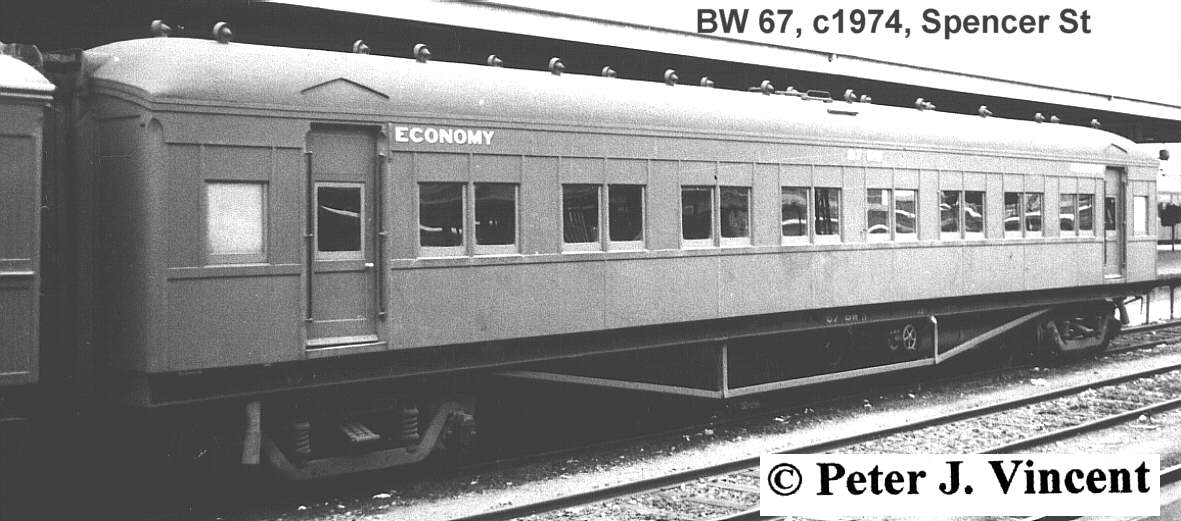

This group of cars was introduced to service from 1911.
There has been great interest in the origin of the 'W' group letter. In most other cases the letter has been derived from a basic feature or use of the car type. In the 1900's, new express passenger cars were being built to replace ageing equipment from the 1890's and earlier.
At the same time shorter cars of the same design were built. As these cars were for general stopping trains, the author believes the 'W' may represent 'Wayside' or non-express passenger type.
Between 1911 and 1925, cars 1 to 44 were placed into service. These were about 58' long. Cars 1 to 39 were clerestory roof style, with the cars 40 to 44 being arched roof, this style being cheap construction.
In 1926/1927, some 64' cars with semi-ellyptical roofs were placed into service ( see ABW_ for unusual 'in service' history ). The eleven cars were numbered 60 - 70. These cars are 10' ( ten foot ) wide. Most other stock was 9'6".
In 1937/1938 more second class cars were required. Cars 71 - 79 were reclassed from similar _AW_ style cars. These cars were converted back to AW in the late 1950's.
In 1980, BW 71 - 79 entered service again for the second time. They were converted from standard guage 'second division' cars ( VFW_ class ) which had been converted from the AW cars recoded from the same BW numbers in the late 1950's!
In 1981, BW 80 - 82 were converted from ABW 61 - 63.
From 1981 the class were progressively removed from service and scrapped or sold. Bodies of both types can been seen around paddocks in Victoria.
BW 10 and 27 were destroyed in a collision at Seymour, 1935.
BW 30 was scrapped in 1970.
BW 24, 29 was destroyed by fire at Ballarat Car Sheds, 1977.
Some cars have been restored to service for historical and charter trips.
To better describe passenger cars for seating capacity requirements, cars BW 67 and 70 were relettered to BWL in 1982. The 'L' indicates a larger seating capacity.